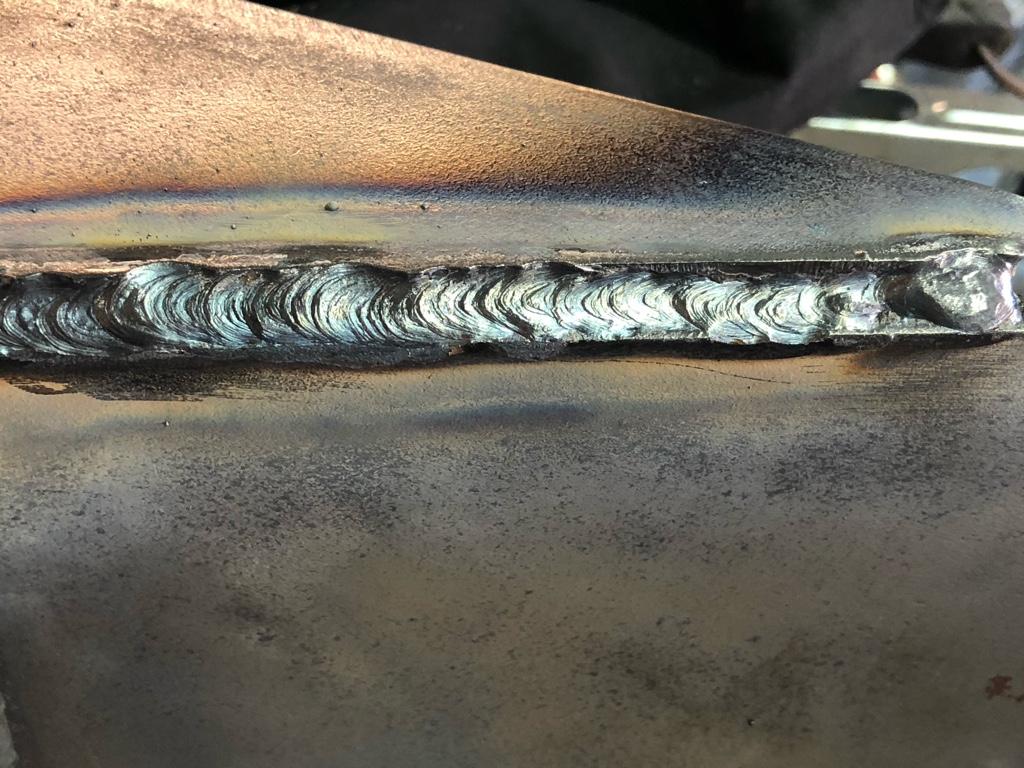How to Prevent Weld Undercut: Essential Tips for Welders
How to Prevent Weld Undercut: Essential Tips for Welders
Blog Article
A Comprehensive Overview to Identifying, Averting, and Dealing With Undercut Welding Troubles in Your Welding Jobs
In the realm of welding, experiencing undercut problems is a typical challenge that can endanger the architectural integrity and total high quality of your welding jobs. Comprehending the source behind undercut welding, being able to precisely identify it in your welds, and executing effective preventative measures are crucial abilities for any kind of welder. Furthermore, having the knowledge and techniques to rectify undercut troubles when they do take place can make a substantial distinction in the last result of your welding undertakings. Stay tuned as we check out the vital parts of identifying, avoiding, and repairing undercut welding issues, offering you with important understandings and approaches to elevate your welding skills to the next level.
Typical Sources Of Undercut Welding
Undercut welding, an usual problem in welding processes, can be caused by different factors that require to be carefully identified and dealt with to ensure the stability of the weld joint. One of the main causes of undercut welding is too much warm input.
An additional common reason for undercut welding is improper welding technique. Poor control of the welding lantern or weapon, incorrect angle or range in between the workpiece and the torch, or irregular travel rate can all add to the formation of undercut. Furthermore, utilizing the wrong welding consumables or electrode size for a particular joint setup can bring about undercut problems. Determining these source and executing corrective steps is important in protecting against and remedying undercut welding troubles in welding tasks.
Identifying Undercut in Welds

To identify undercut precisely, correct illumination and magnifying devices are important to evaluate the weld joint extensively. Using tools such as a welding scale or a magnifying glass can aid in discovering also the tiniest undercut flaws. Furthermore, running a finger or a finger nail along the weld joint can in some cases disclose undercut, as the surface might really feel irregular or have a dip where the undercut exists.
Preventative Actions for Undercut
Having a deep understanding of the root causes of undercut in welds enables the implementation of reliable safety nets to keep weld top quality and stability. One vital preventative procedure is appropriate weld joint preparation. Guaranteeing that the edges are tidy, devoid of impurities, and appropriately beveled can substantially decrease the possibility of undercut (Preventing weld undercut). Additionally, choosing the appropriate welding parameters, such as voltage, existing, and take a trip speed, is essential. These setups must be optimized to protect against too much warm input, which can lead to damage formation.

Strategies for Taking Care Of Undercut

Increasing the welding existing or minimizing the travel rate can aid fill in the undercut. In addition, changing the welding strategy from a press click here to find out more to a drag or vice versa can likewise aid minimize undercut.
One more strategy is to use a weaving movement while welding to make certain proper sidewall combination and fill in the undercut. By oscillating the welding arc back and forth within the weld joint, the welder can deposit much more filler product right into the undercut areas, successfully removing the defect.
Furthermore, grinding out the undercut and rewelding the joint can be a feasible service for more serious undercut problems - Preventing weld undercut. This process includes getting rid of the undercut area, preparing the base metal, and after that rewelding the joint with appropriate welding criteria and strategies to stop undercut from repeating

Expert Tips for Staying Clear Of Undercut
Utilizing appropriate welding strategies and maintaining control over essential welding criteria are essential approaches for welders aiming to avoid undercut in their weld joints. see this here Furthermore, selecting the suitable welding procedure and filler steel for the details application can help avoid undercut. Keeping a regular travel speed during the welding process is one more crucial tip to avoid undercut.
Final Thought
To conclude, identifying, avoiding, and taking care of undercut welding troubles in your welding tasks is crucial for guaranteeing long lasting and solid welds. Preventing weld undercut. By recognizing the usual reasons of undercut, being able to identify it in welds, executing precautionary procedures, and using appropriate methods for taking care of undercut, you can prevent prospective problems and create premium welds. Complying with professional suggestions why not try this out for avoiding undercut can help you improve your welding abilities and generate much better lead to your projects
Undercut welding, a common concern in welding procedures, can be triggered by various elements that require to be meticulously recognized and dealt with to guarantee the integrity of the weld joint. Additionally, running a finger or a finger nail along the weld joint can often reveal undercut, as the surface may feel uneven or have a dip where the undercut exists.
Making use of appropriate welding techniques and maintaining control over crucial welding specifications are important strategies for welders intending to stop undercut in their weld joints.In conclusion, identifying, protecting against, and taking care of undercut welding problems in your welding tasks is important for ensuring durable and solid welds. By understanding the usual causes of undercut, being able to recognize it in welds, executing preventative procedures, and utilizing appropriate techniques for taking care of undercut, you can avoid possible issues and produce top quality welds.
Report this page